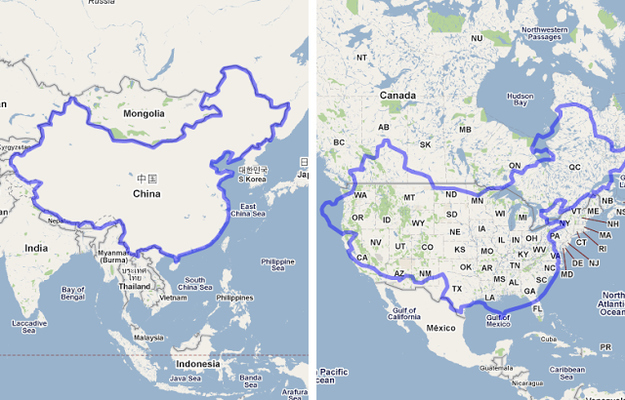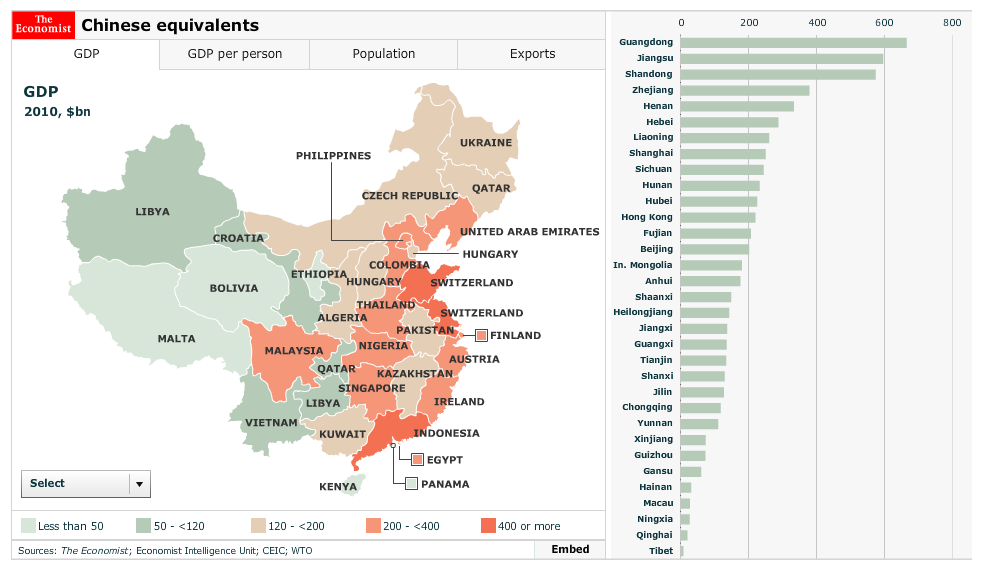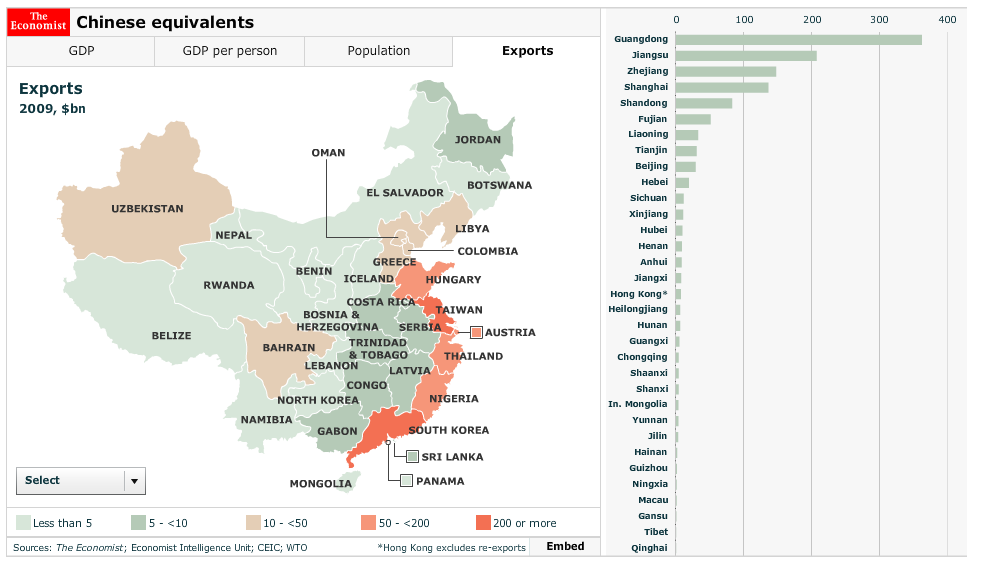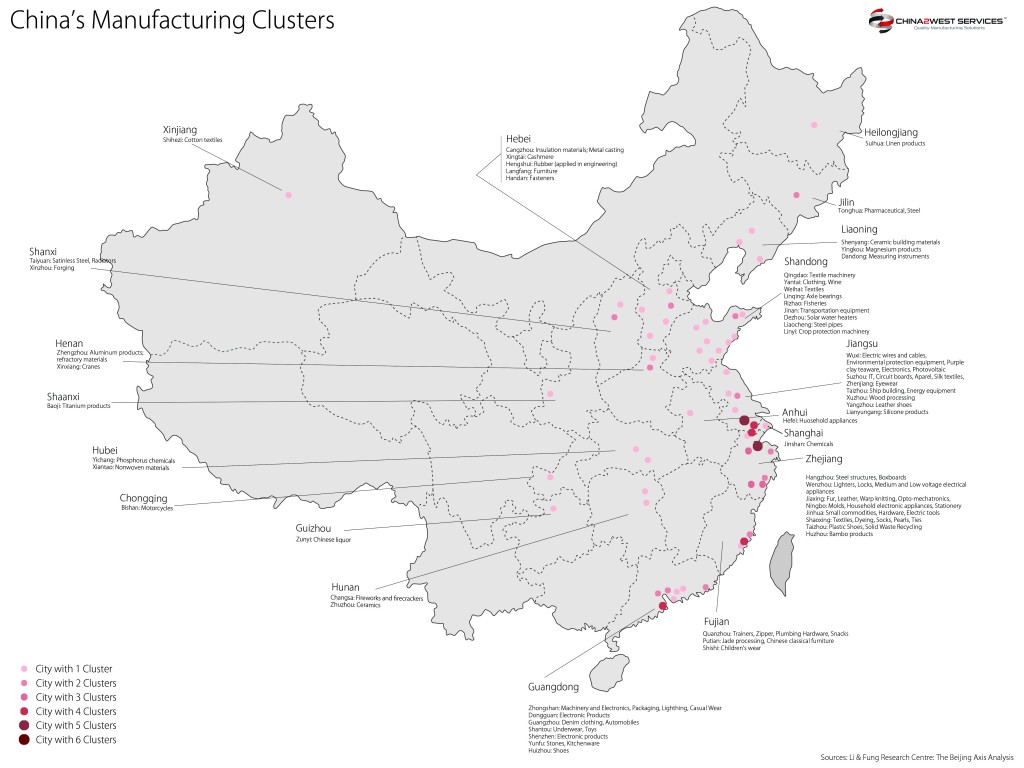Is well known China is one of the largest countries in the world, and the most populous country holding a population of approx, 1.4 billion people, all this numbers are big per se but how does China looks when compared to other nations.
China Size
• China (9,596,961 km²) is 0.98 times as big as United States (9,833,000 km²).
• Compared to Europe, China (9,596,961 km²) is 0.94 times as big as Europe (10,180,000 km²).
• China (9,596,961 km²) is 0.56 times as big as Russia (17,098,242 km²).
• China (9,596,961 km²) is 2.92 times as big as India (3,287,263 km²).
China is the most populous nation with almost 1.4 billion people, it holds 1/5 of the earth’s inhabitants within its boundaries.
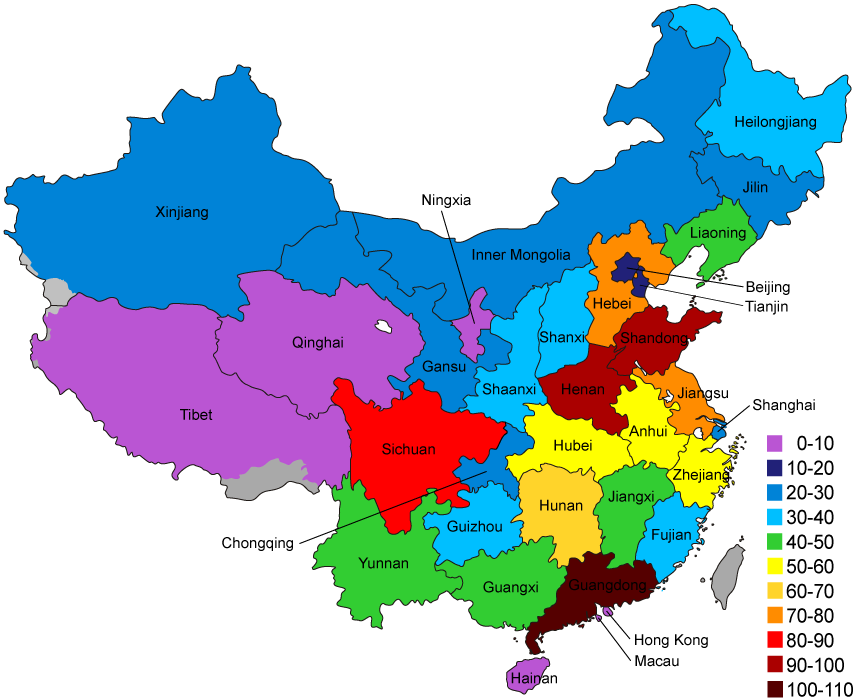
If we compare China’s most populous provinces to countries, this is what it would look like,
| Administrative Division | 2010 | National Share (%) | Comparable Country |
| China | 1,339,724,852 | 100 | India |
| Guangdong | 104,303,132 | 7.8 | Mexico |
| Shandong | 95,793,065 | 7.2 | Philippines |
| Henan | 94,023,567 | 7.0 | Philippines |
| Sichuan | 80,418,200 | 6.0 | Egypt |
| Jiangsu | 78,659,903 | 5.9 | Iran |
| Hebei | 71,854,202 | 5.4 | Turkey |
| Hunan | 65,683,722 | 4.9 | France |
| Anhui | 59,500,510 | 4.5 | Italy |
| Hubei | 57,237,740 | 4.3 | Italy |
| Zhejiang | 54,426,891 | 4.1 | South Africa |
Recently The Pearl Delta River region which encompasses the Guangdong region, and holds almost 8% of China’s population overpassed Tokyo as the largest megacity, holding more people than the total population of Canada, Argentina, or Australia, but that’s not all, recently China’s policy makers released a plan to convert Beijing and the surrounding areas into a 130 million inhabitants city.
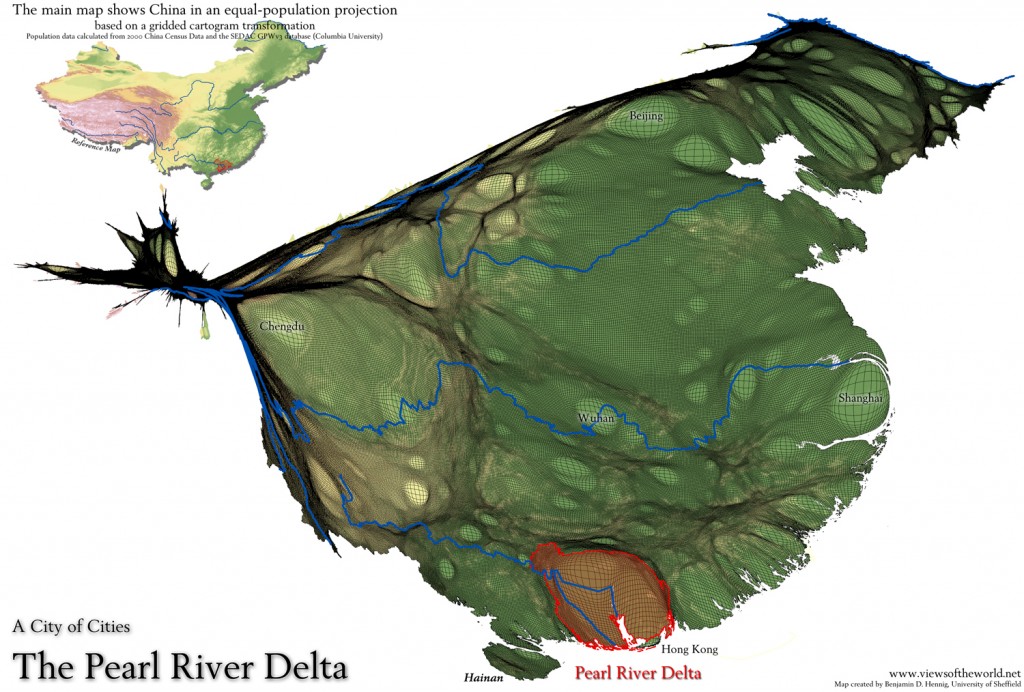
In economic terms Chinas provinces GDP and exports volume numbers are bigger than some nations, in 2011 The Economist released a map comparing Chinese provinces with countries, here’s is the map to take a look at the bigger picture:
China has been the world manufacturing hub for the last couple of decades, but for understanding how and where to manufacture goods depending on the manufacturing techniques and resources needed we need to look at China at a regional level.
Speaking about Manufacturing Expertise is important to mention, that depending what you’re looking for to be manufactured and the quality and infrastructure required you ought to look for either a Tier 1 or Tier 2 city (Our Guide to China’s Tier 1 and Tier 2 Cities), below we review the most important china manufacturing regions and its expertise
Guangdong area
Guangdong, located at the south east of the nation, focuses more on high end products such as electronics, computers, high-end leather products and garments. The long history of international business makes this area the easiest to work with for foreigners as it has a much more mature business atmosphere than most of the other areas. Also its link with Hong Kong and Macau not only by the Pearl Delta River but also by land makes it a perfect destination not only to manufacture, but also to store and ship the products to the world.
Shanghai area
Shanghai has become more and important since 1990’s with the country’s development focus moved to this area strategically, becoming the nation’s financial hub. But before this, the industries in this area had been growing savagely so many industrial areas are not as organized as Guangdong. But there are still some great companies grown up from the jungle. Many products are produced in this area such as tools, machineries, daily commodities, suitcases, etc.
Foreign customers consider that the overall quality level is a little worse than Guangdong, example of this is the Yiwu Market that can be seen as a miniature of the whole area, where people sell very cheap products of pretty low quality.
Shandong area
It specializes in machinery, food and home appliances, etc. Big chinese manufactuers such as Hisense, Haier, Qingdao Beer are all from this area. Beside the few biggest companies, 80% of the companies are still small and more attention should be paid when dealing with suppliers from this area.
Besides the three main industrial areas, more and more others grow every year, areas like Nanning, Zhengzhou, Wuhan, Changsha, Chengdu, Xi’an, etc. With the increase of labor/land cost of the big cities and coastal areas over the past few years more and more factories have been moving to inland cities developing into new industrial clusters.
We’ve clearly seen that China is an enormous country, so it should come as no surprise that there are many types of Chinese within its borders and abroad.
You can’t talk about “the Chinese language”, as China has a great variety of languages and dialects.
Therefore: be specific about what language or dialect your dealing with when you want someone to interpret.
Major Variants of Spoken Chinese
Because of the number of inhabitants in China, Chinese spoken languages count as the world’s most commonly used languages. Mandarin and Cantonese are the most famous dialects of Modern Standard Chinese language (Guoyo, Putonghua).
Mandarin is considered a native language with about 66 % of China’s inhabitants speaking it. This makes it the most dominant spoken Chinese dialect, while Cantonese lays claim to approximately 55 million speakers in China alone. While these are the spoken Chinese dialects you are most likely to encounter, there are many more!
Spoken Chinese is separated into five main dialectical groups, of which Mandarin is only one. Yue (which includes Cantonese), Min, Wu and Hakka make up the other four, covering more than 200 individual dialects. Some of these dialects are only used in very small geographical areas, while others spread all across the country and beyond.
We’ve understood that China is a country full of contrasts from the size of population, manufacturing hubs or language, so when having a new china manufacturing project you ought to take in count all the previously mentioned facts in order to ensure that you manufacturing venture will be a success.
But understanding the regional China’s is not all you need, being able to overcome any manufacturing and cultural issues that might appear in the process is another story, for which hiring and specialised China Manufacturing Consultant like China 2 West would ensure not only the success of your project but will help you not only to choose the best destination for your china manufacturing ventures but to have local eyes and ears inside China.

